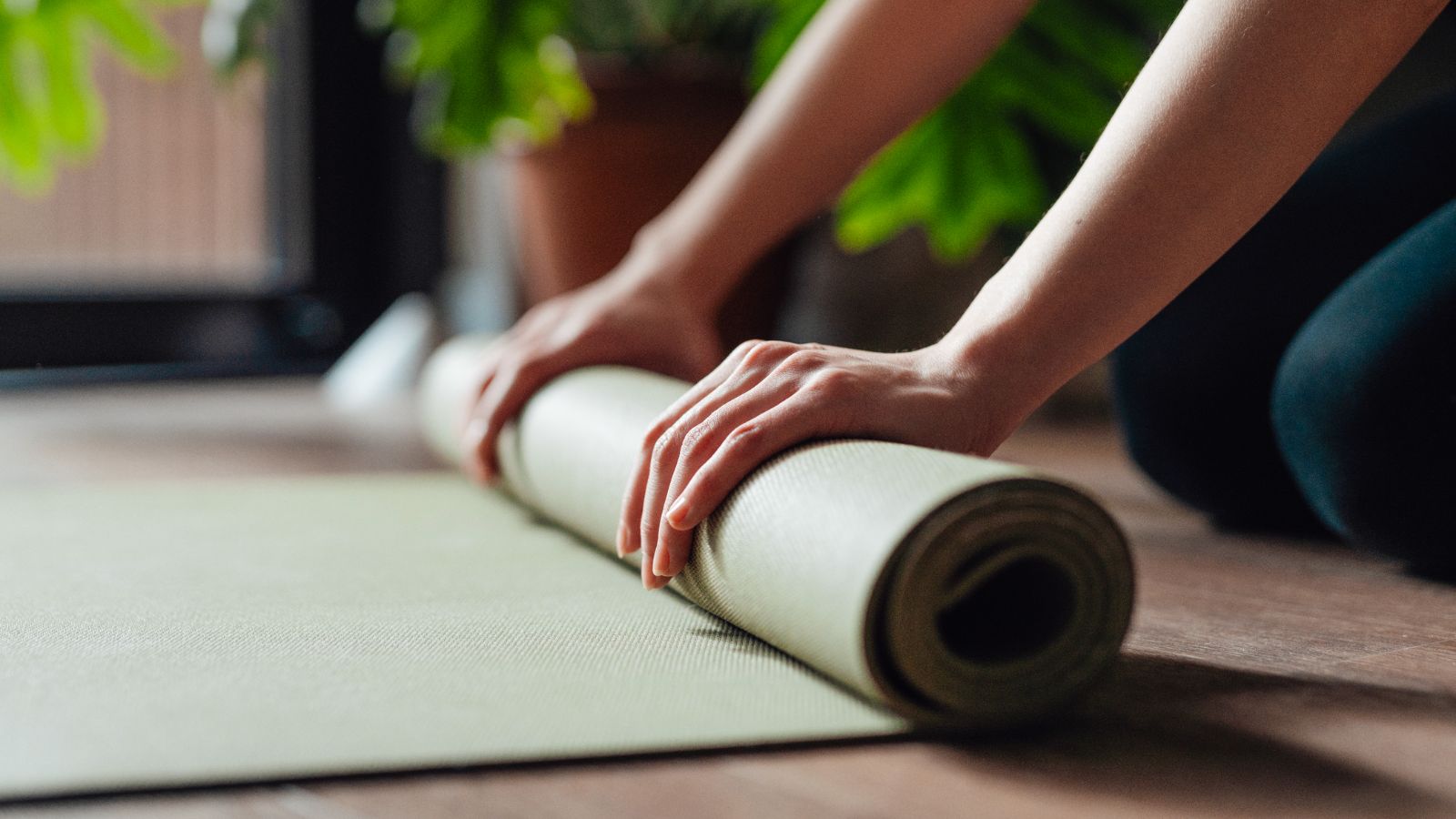
I remember the first time I realized how important it was to clean my yoga mat regularly. After a few weeks of intense workouts, my mat started to develop an unpleasant, musty odor.
So, when cleaning my home gym, I added my yoga mat to my checklist. Not only did the smell soon disappear, but my mat also felt more comfortable and grippy during practice.
This simple task can make a big difference to your overall yoga experience. So, follow these easy steps to clean your mat and reclaim your zen.
How to wash yoga mats
After repeated use, your yoga mat may be harboring harmful germs and bacteria. If you do not regularly wash your mat, these foreign bodies can cause nasty skin infections and develop bad odors.
Follow these simple steps to stay hygienic during yoga practice:
Step 1: Make a cleaning solution with essential oils

Before you begin washing your yoga mat you will need to collect and prepare all of the tools and materials.
Supplies Needed:
- A mild dish soap or a yoga mat-specific cleaner, such as the Manduka Yoga Natural Mat Wash and Refresh cleaner from Amazon
- Your favorite essential oil (I like Isabelle essential oil from Aesop)
- A soft cloth or sponge
- A Zep Professional Sprayer Bottle from Amazon
- A clean towel
Aside from aiding in cleaning, essential oils can act as a natural deodorizer, making your mat feel fresher with every use.
Step 2: Stir and Sift the Solution
'Combine a squirt of mild dish soap or yoga mat cleaner with 3- 5 drops of essential oil and warm water in a sprayer,' advises certified yoga instructor Michelle Justice. 'Shake well to combine and then coat the yoga mat well, making sure to wet the entire surface of the mat with the concoction.'
Using a spray bottle allows you to apply even mists, while the essential oils help metabolize bacteria.
Step 3: Gently Scrub The Mat
James King, cleaning expert and operations manager at DeluxeMaid, recommends that you use a soft cloth or sponge to clean the mat to get rid of the dirt or stains accumulated from sweating.
'Take special care to avoid damaging the mat’s surface and texture,' James cautions. 'Do not soak the mat, because water might harm it in the long run'.
Step 4: Rinse off the soap residue
Rinse the mat using plain water and a clean cloth to remove all soap and oils. Washing all the residues helps prevent the mat from becoming slippery and ensures that no toxic chemicals remain on the surface.
Step 5: Dry the Mat Properly
‘Spread the mat directly onto a clean towel and roll them together to absorb as much water as possible,’ says James King, professional cleaner. ‘Then, spread the mat flat and hang it on a drying rack or neatly spread it over any clean dry area. After its use, ensure it is thoroughly dried before rolling it to avoid getting spoiled.’
It's important to make sure the mat is completely dry before you store it away again, as a damp yoga mat can develop mold or mildew. For best results, leave the mat to air dry outside on a warm day.
Additional Cleaning Tips
Spot Cleaning: For cleaning between sessions, a pre-moistened wipe containing a natural disinfectant such as tea tree oil is advisable. These PediFix Tea Tree Wipes from Walmart are designed for feet but will also keep your yoga mat fresh.
Avoid Harsh Chemicals: Do not use strong or abrasive detergents on the mat as they may cause wearing out of the mat as well as skin rash.
Sunlight Exposure: It is recommended that you do not expose the mat to direct sunlight for a long time, so when air drying your mat keep an eye on it.
Storage: When not in use, roll up your mat tightly and keep it in a dark and dry area, preferably in a yoga bag, for better cover.
Using essential oils to deodorize and clean is one of the best cleaning tips that will protect your mat for years. The key is sticking to natural, mild cleansers and avoiding anything too harsh or tossing your mat in the washing machine.







